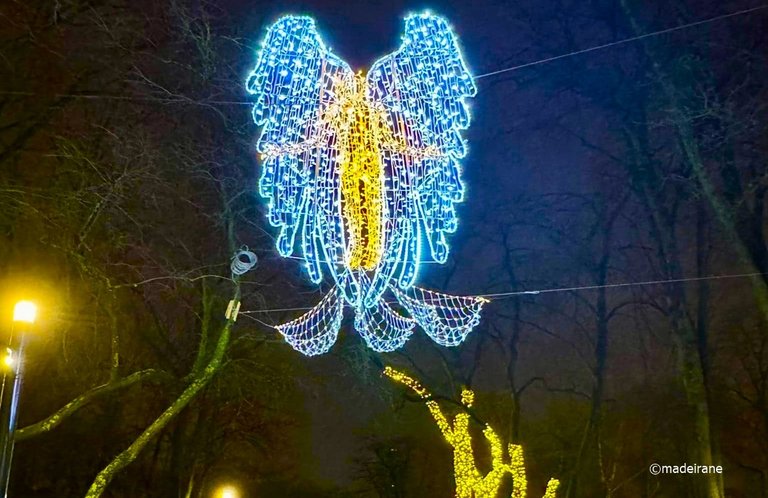
This evening, we decided to feel the festive spirit of the port city of Lithuania and discover the Christmas spirit in the city's decorations that wind through the most beautiful streets of the city! Today we got a little snow in the morning, but now it's all melted.
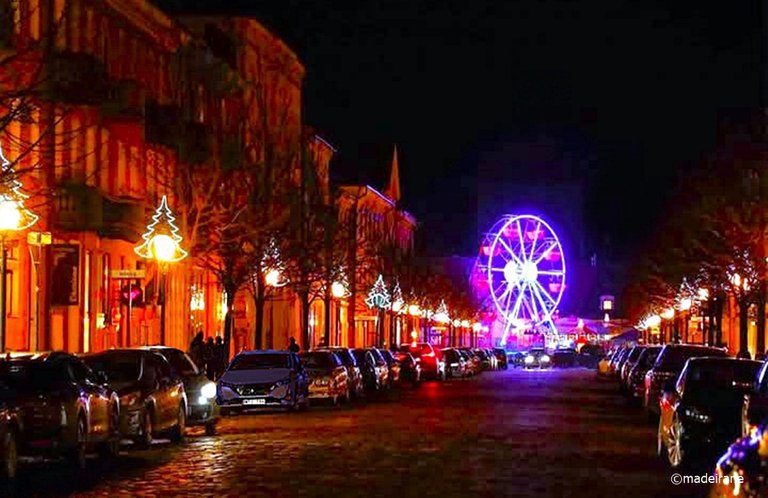
The legend explains the meaning of the Lithuanian name of the city, Klaipeda. Brothers who lived in this area decided to find new land for settlement. The brother named Wolf went south, and the other - Deer, went north. After some time, Deer came to the sea and liked this area. He decided that this would be their new home by the sea, surrounded by sandy beaches. Deer did not meet Wolf, so he began to look for his brother, but he disappeared. All that was left of him was a trace in the swamp, in Lithuanian - "klampi peda" - which means "marshy trace". The Deer stayed to live here and named the city Klaipeda.
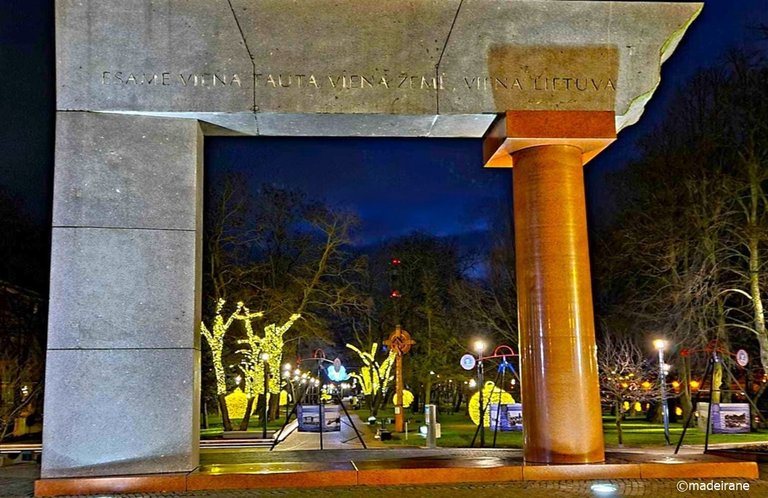
We approached the bridge, the oldest bridge in the city. It divides the city into the Old and New. The bridge, also called the Karl Bridge, is thrown over the Dane River. Previously, this bridge was wooden, but at the beginning of the 20th century, the wooden elements of the bridge were replaced with metal ones.
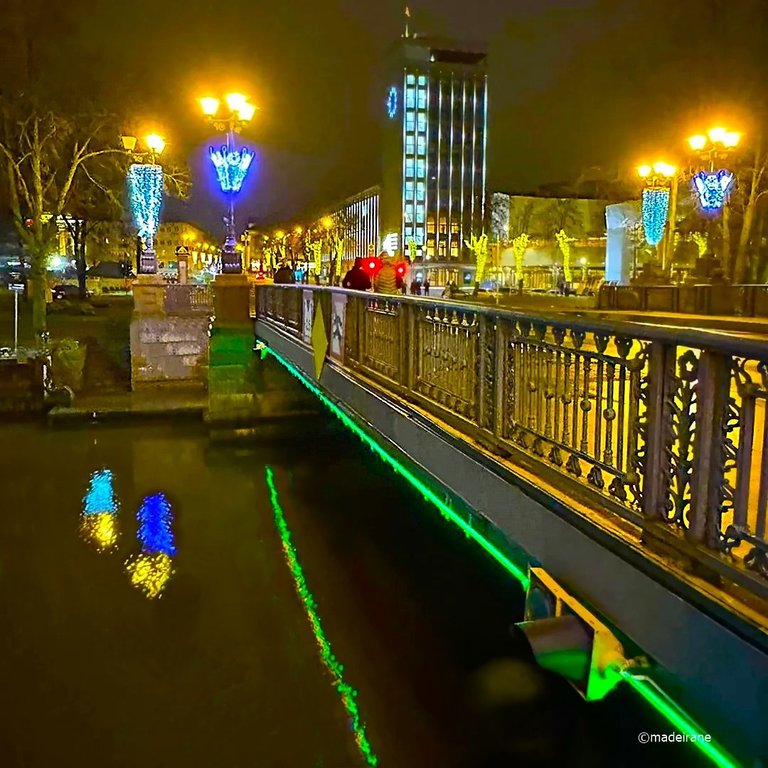
We crossed the bridge to the right bank of the Dane river as it turned out to be more interesting. There are long benches for rest along the river, where you can walk along the shore - there is a promenade.
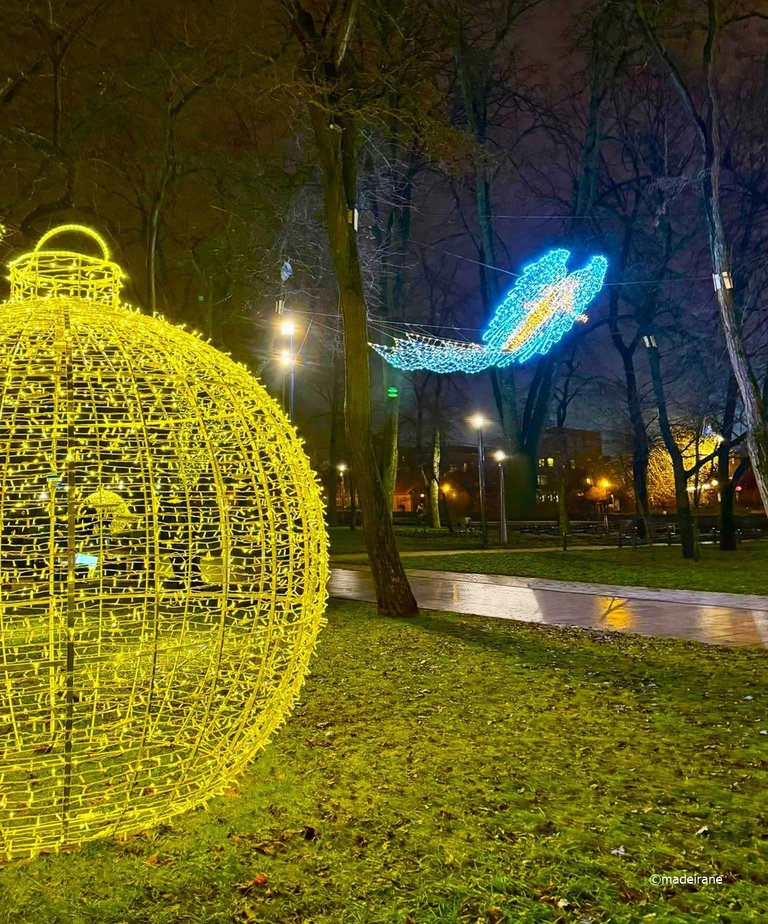
On the right bank of the river, not far from the bridge, the sailboat "Meridianas" is permanently moored - the symbol of Klaipeda. This sailboat was built in Turku (Finland) in 1948 and among the others (total of 49 ships) was donated to the Soviet Union. On this sailboat, the cadets of the Klaipėda navy went to sea until 1967, after which the sailboat was put on anchor and it began to age. But there were rich enthusiasts, they put the ship in order and now there are excursions on it and the restaurant is open.
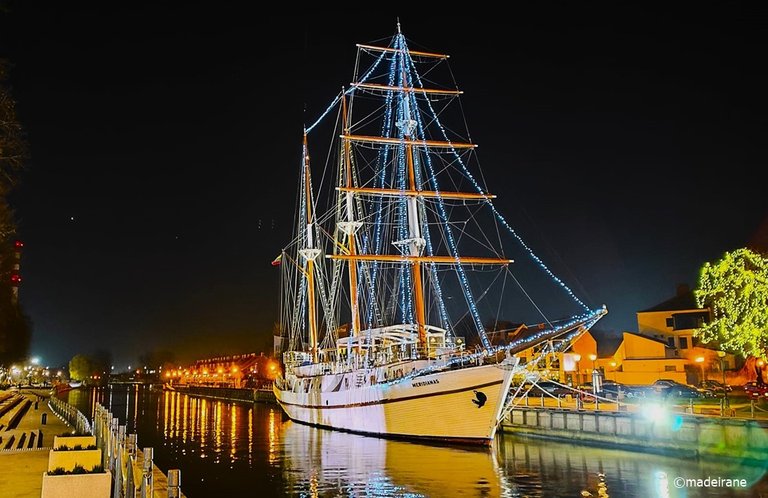
Here I also noticed the picturesque area around. In a nice German-built house (there's a bar down there) I saw a chimney sweep figurine on the roof! But you can't reach it to rub the button and wait for your wish to come true... a resourceful sculptor attached a metal button to the facade of the building so that everyone could have the opportunity to do so! But I didn't know about it. I admired the Chimney Sweep from afar... What a pity! Friends, if you're in Klaipeda, find the button! You need to go up to the house and walk around it.
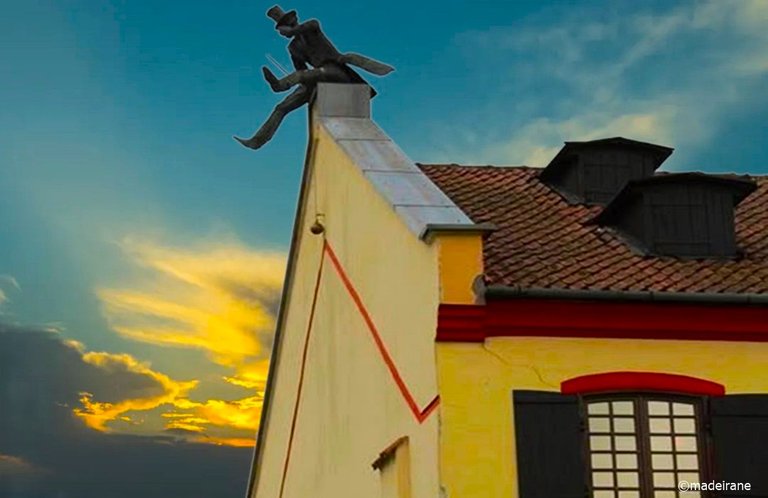
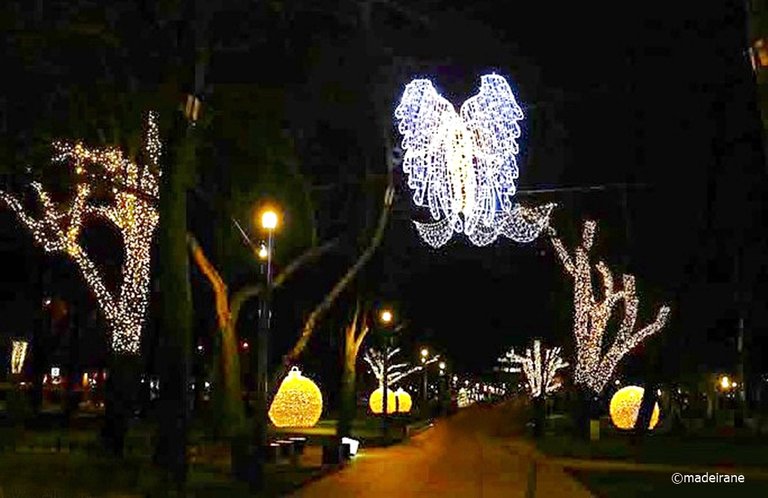
The mermaid is a sea symbol of Klaipeda and one of the pleasant sculpture-sights. There is a legend that when the water in the Dane River rises, a beautiful mermaid appears, tempting fishermen. With her eyes downcast, she mourns for the young man who could not be saved...

The Lithuanian sculptor depicted such a seductive beauty - a mermaid in bronze. He also immortalized litas, money of Lithuania, which has become a thing of the past. The luxurious mermaid tail is decorated with coins of one litas denomination!
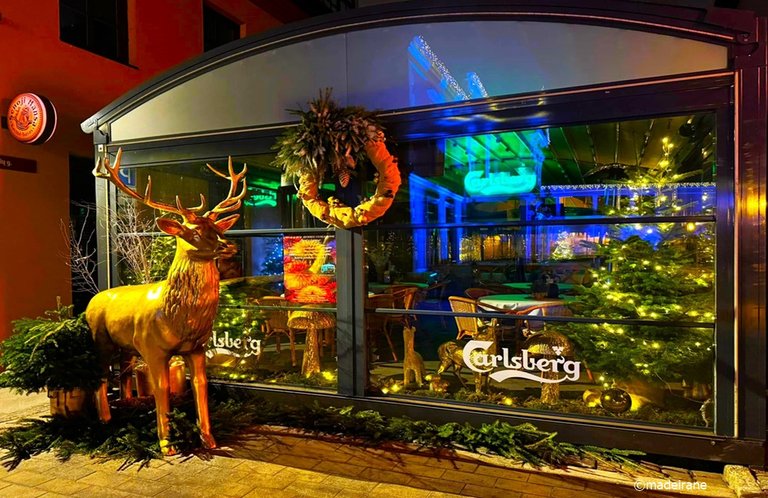
I really liked this sculpture. Mermaid looks iextraordinary! Comparison with the Copenhagen mermaid would be incorrect, but when I saw her, she disappointed me... It is from such details and unusual monuments that the impression of the city is formed!
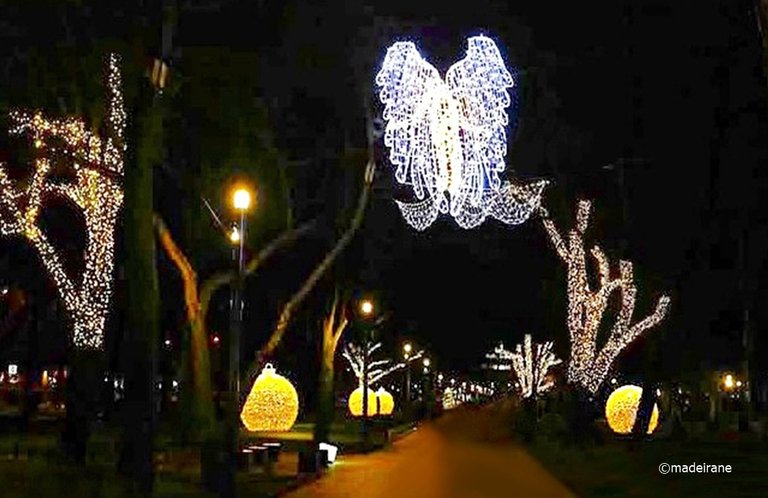
Let's continue our journey further and go to the Old Town - this is the most interesting part of Klaipeda. The area is not big, so we could easily walk around it, looking at everything we found.
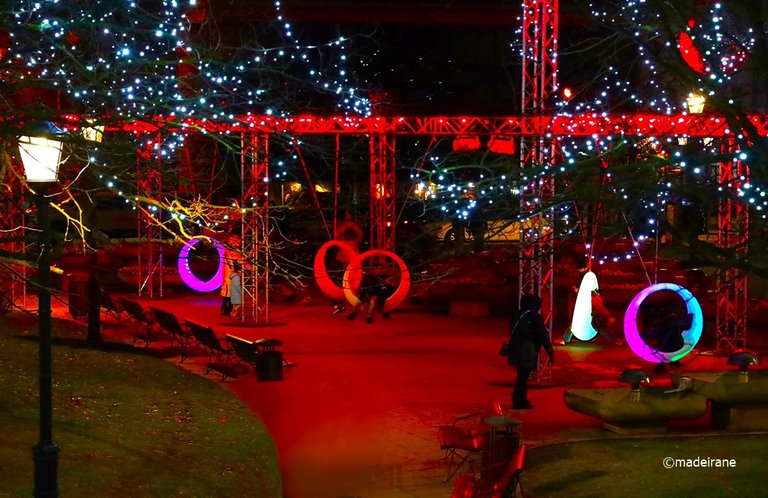
Klaipeda city suffered greatly during the war. It was destroyed by 60%. Even the German Memel was subjected to a severe fire in 1854. But even those buildings, the medieval layout of the city, the cobblestone streets that miraculously survived the cataclysms, allow us to get an idea of the past.
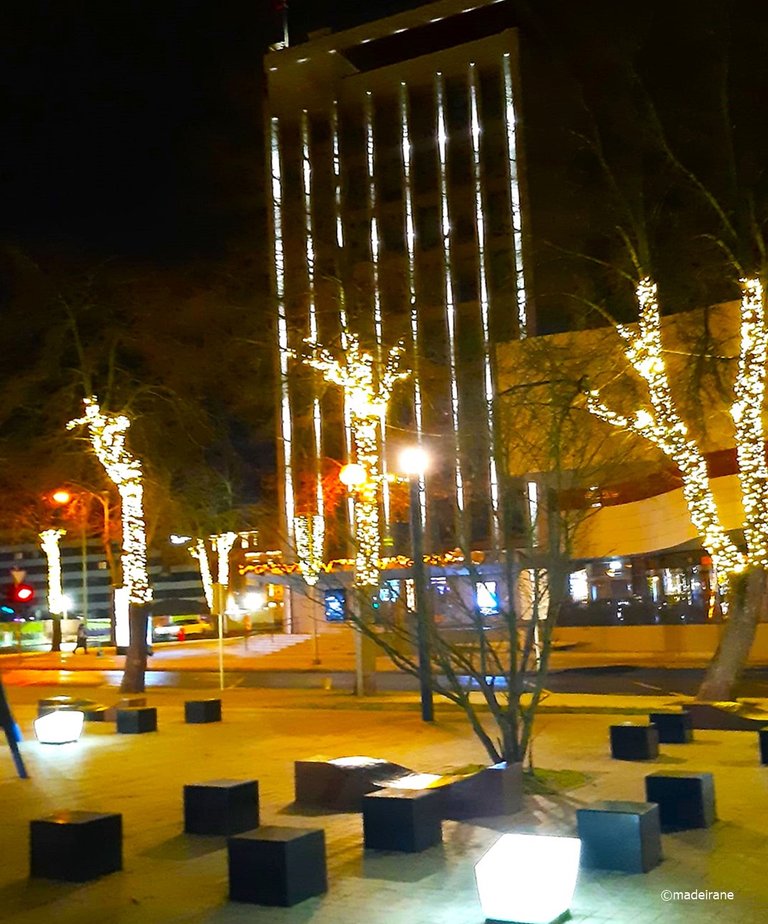
These traditional German buildings on the banks of the Dane River now house cozy restaurants, cafés and bars.

The cobbled streets of the old town will lead every tourist to the center - to the Theater Square of the city. Until the middle of the 20th century, the square had name of Market Square, and the market was located there. Buildings built in the late 18th century surroud the square. Now it is the heart of the city, where all significant and important events are held.
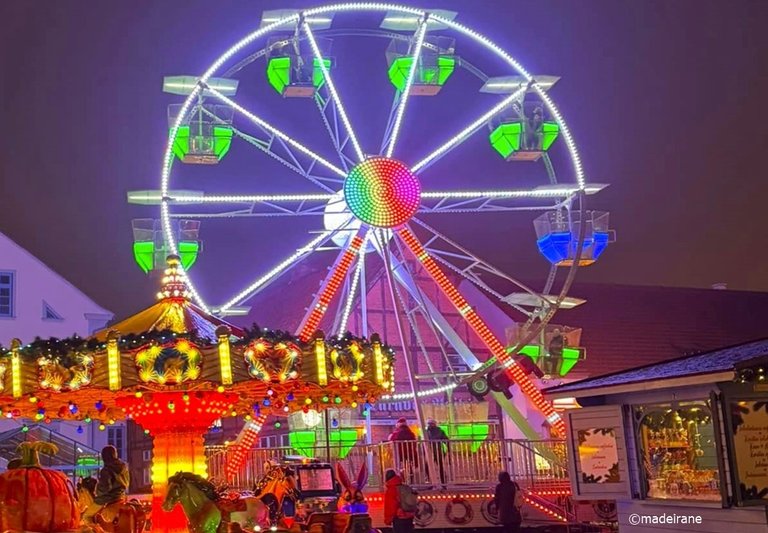
In the Theater Square there is an old and very beautiful theater building, built in 1775, and in front of it is the Dach Fountain. Richard Wagner toured with the Royal Opera in the theater. From the balcony of this theater in the spring of 1939, Adolf Hitler made a speech in which he declared that, according to the decision of the League of Nations, the Klaipeda region would join Germany.
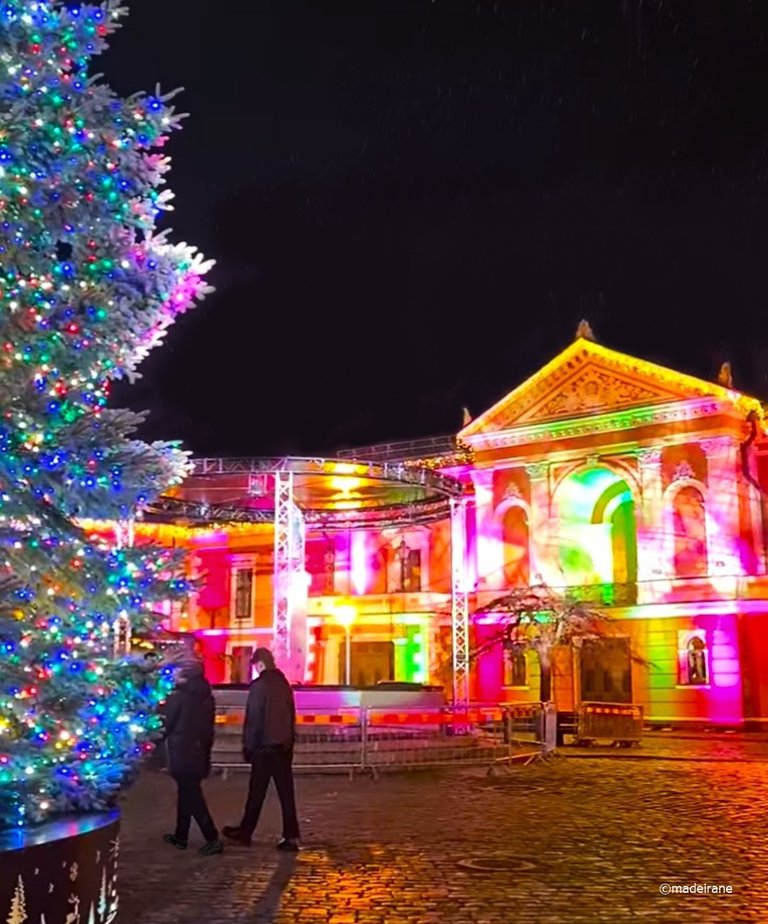
The fountain is crowned by a sculpture of a girl named Anchen, or, in Lithuanian, Anike. She is the heroine of a popular song with lyrics by S. Dakh "Anchen from Tarau". It's a pity this song is not played in the square...
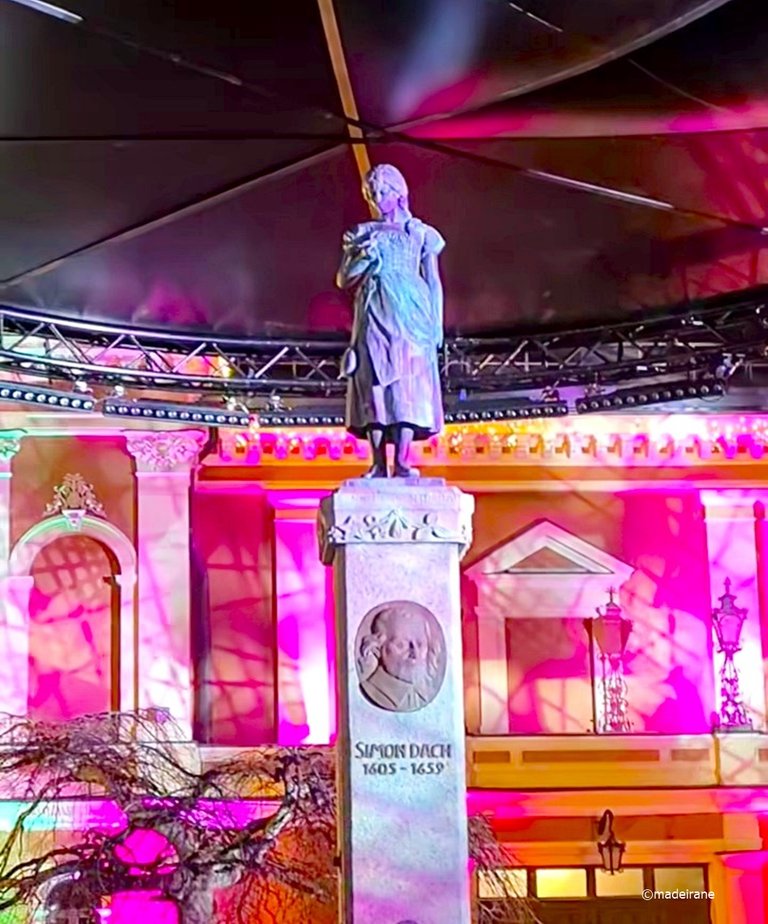
During the war, the sculpture of the girl disappeared without a trace. In 1988, a German tourist visited the city. His parents lived in Memel before the war. He initiated the revival of the fountain and the return of the sculpture of Anchen to its historical place. A society was created, with the help of which it was possible to find historical photographs in Germany and even a small copy of the sculpture. A new bronze sculpture was created - Anchen-Anike was returned to her historical place!
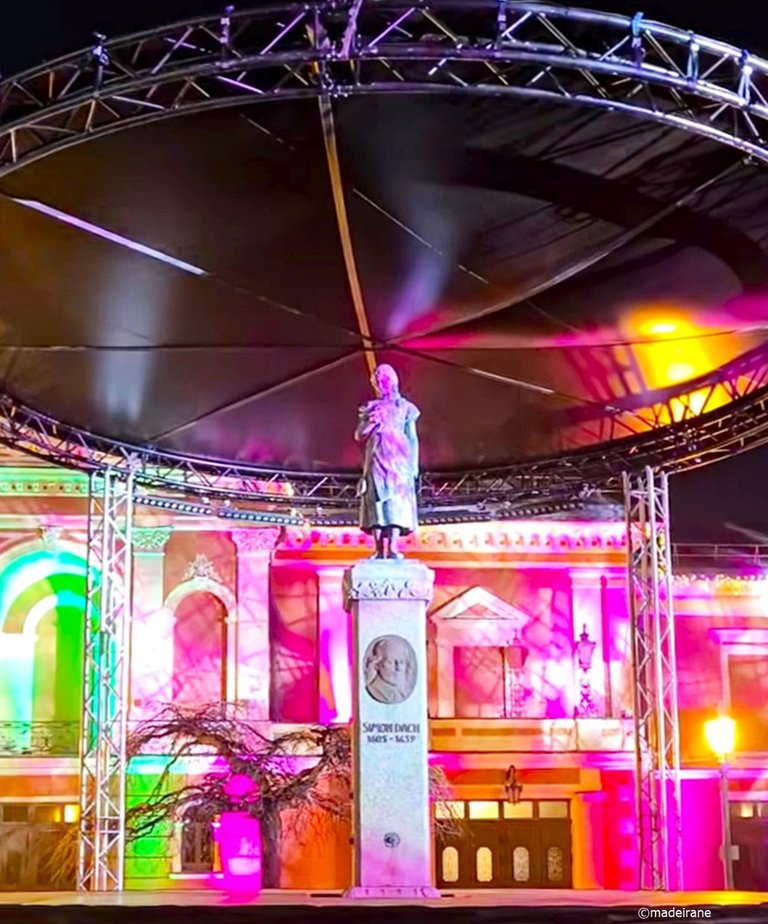
The Christmas Tree is now decorated here and invites visitors to enjoy such beautiful minutes.
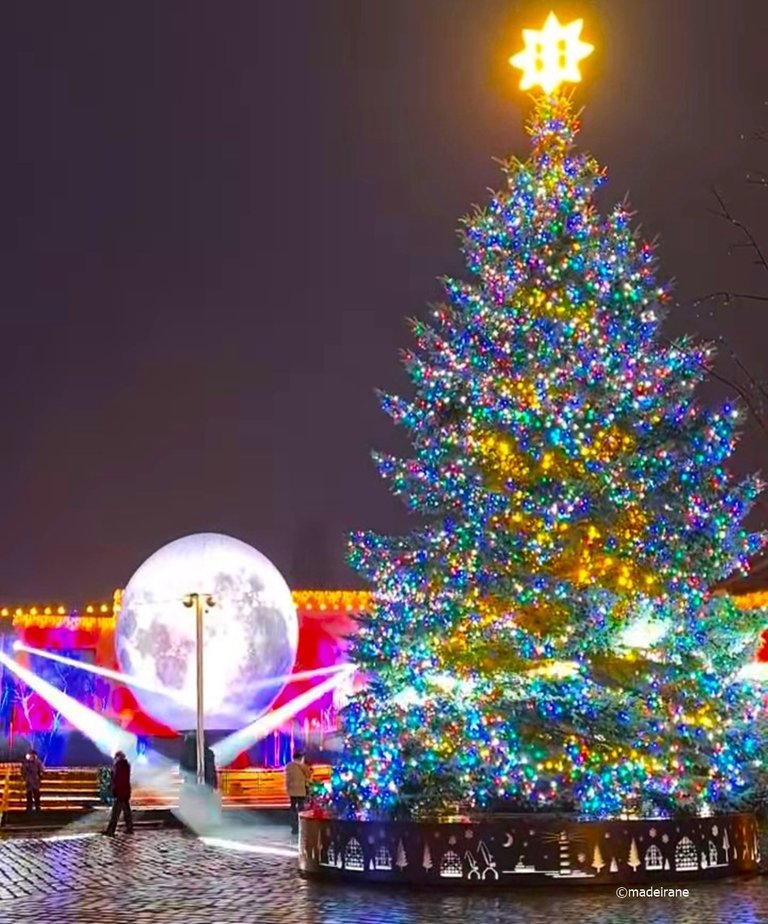
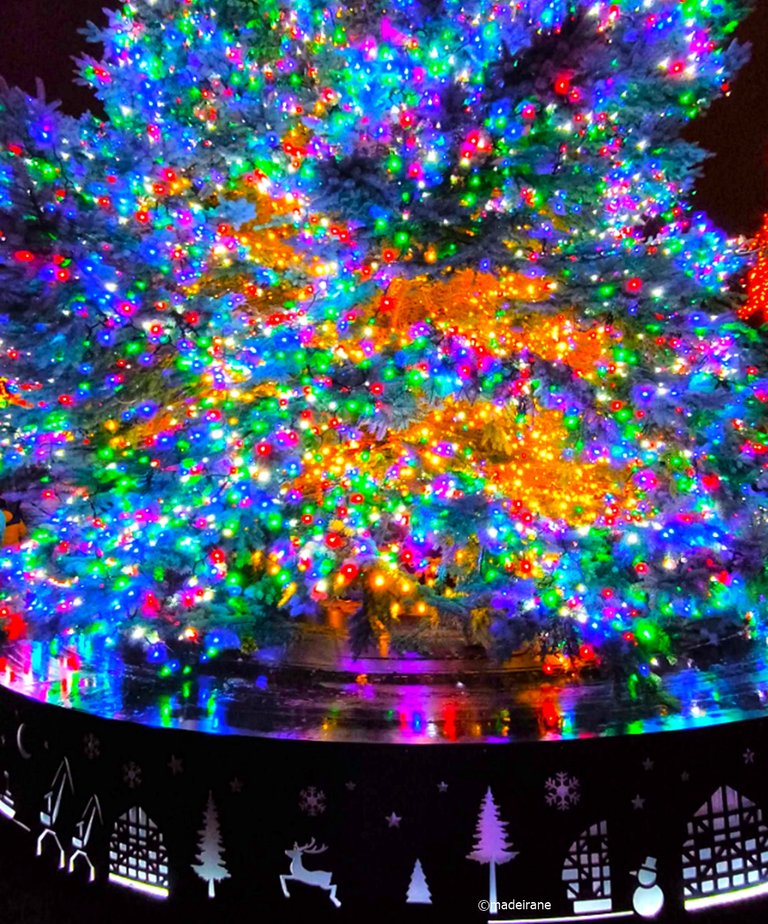
We walked around the city aimlessly, wherever our eyes looked and where our feet led us. Narrow cobbled streets, small burgher houses under tiled roofs left the most pleasant impression.
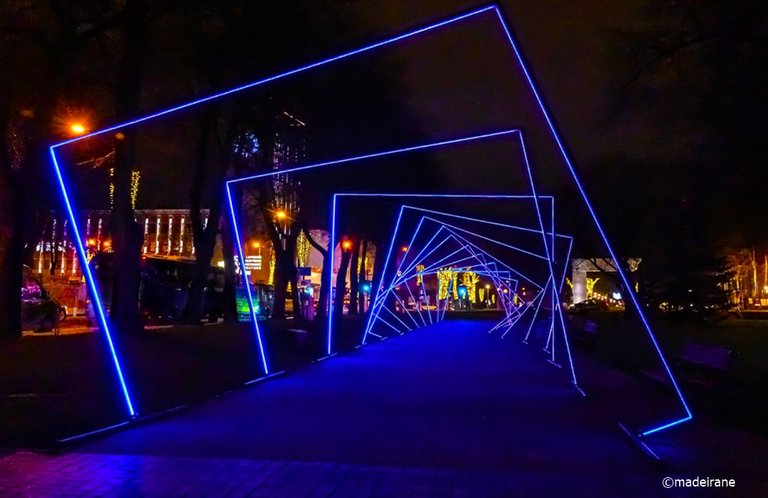
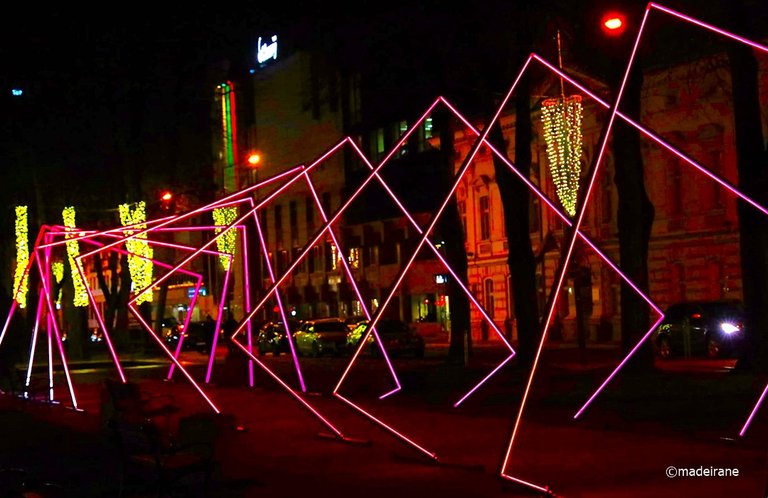
I think, Christmas is a great time for miracles to happen. Do truly miracles happen on Earth? Maybe. Only the arrogant mind of man no longer wants to notice them. In the modern world, everything is possible - and yet so little is actually possible. The denial of a miracle is not a proven theorem that declares that what cannot happen can never really happen. The denial of a miracle is evidence of the fatigue of the human mind.
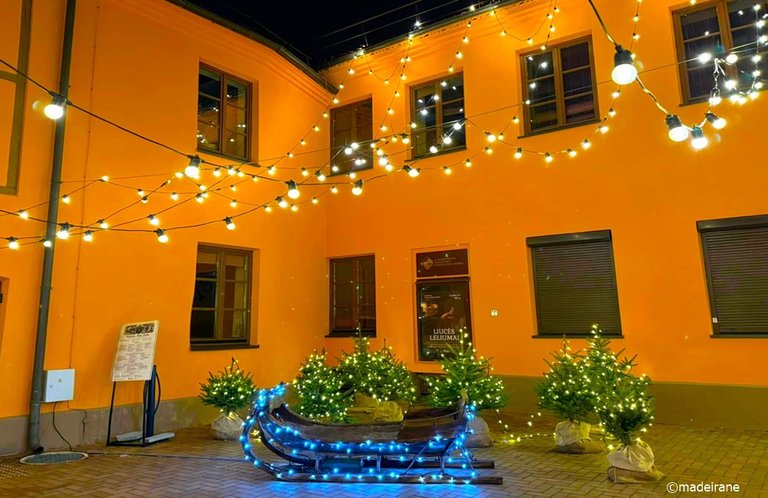
A miracle is not a circus act, nor a spectacular trick... It is the fulfillment of hope when, it seems, there are no possibilities and conditions for its fulfillment. Human stupidity is inseparable from pride. That naive belief that you know everything, that you will be able to manipulate the events of your life, as if you were a great sorcerer or shaman, able to control the forces of nature and other beings...
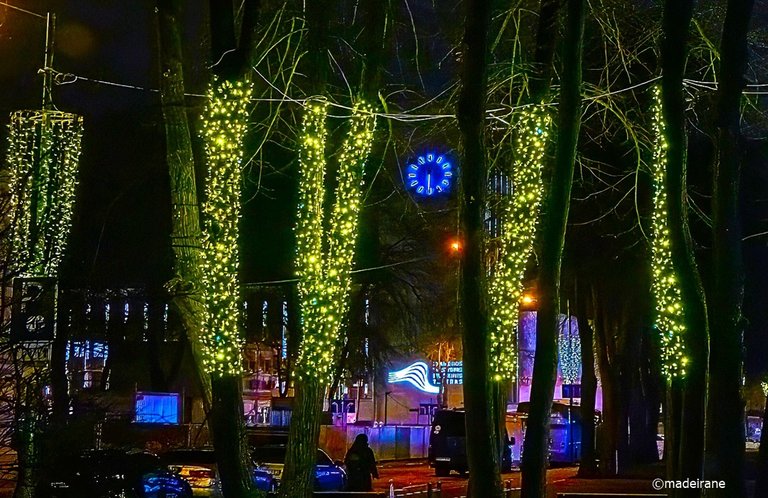
Only with age does an increasingly clear suspicion come that perhaps there are some higher forces, that not everything depends on you alone. All that we can control is our reactions to the surrounding events, and we can only partially control them, but not the events themselves.
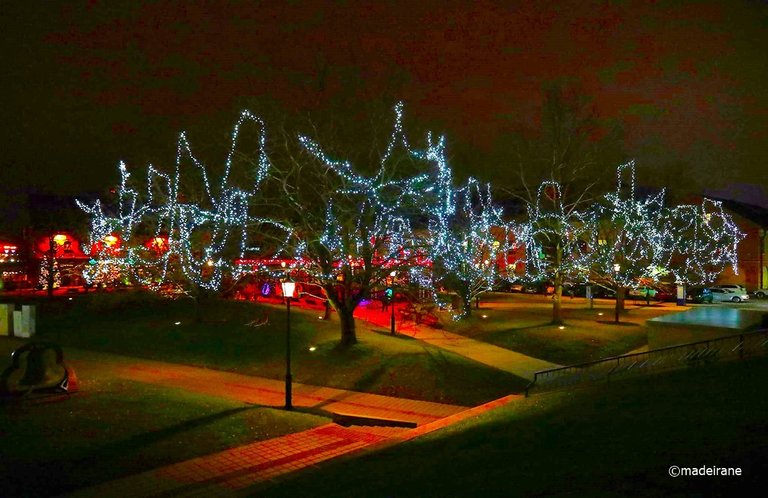
Maybe miracles happen more often than we think? But human pride takes all the credit for itself. I will wait for the Christmas miracles? How about you?
💝💝💝💝💝💝💝💝💝💝
Photos are taken by me.
© 2024With love, @madeirane
Translated from Lithuanian with DeepL.com (free version)
Šį vakarą nusprendėme pajusti šventinę Lietuvos uostamiesčio dvasią ir atrasti kalėdinę dvasią miesto puošmenose, kurios vingiuoja gražiausiomis miesto gatvėmis! Šiandien ryte sulaukėme šiek tiek sniego, bet dabar jis jau ištirpo.
Legenda paaiškina lietuviško miesto pavadinimo Klaipėda reikšmę:
Broliai, gyvenę šiose apylinkėse, nutarė susirasti naują žemę gyvenvietei. Brolis, vardu Vilkas, iškeliavo į pietus, o kitas - Elnias, iškeliavo į šiaurę. Po kurio laiko Elnias priplaukė prie jūros ir pamėgo šią vietovę. Jis nusprendė, kad tai bus jų naujieji namai prie jūros, apsupti smėlio paplūdimių. Elnias nesulaukė Vilko, todėl ėmė ieškoti brolio, bet šis dingo. Po jo liko tik pėdsakas pelkėje, lietuviškai - „klampi pėda“ - tai reiškia „pelkės pėdsakas“. Elnias liko čia gyventi ir pavadino miestą Klaipėda.
Priartėjome prie tilto, seniausio miesto tilto. Jis skiria miestą į Senąjį ir Naująjį. Tiltas, dar vadinamas Karlo tiltu, permestas per Danės upę. Anksčiau šis tiltas buvo medinis, tačiau XX a. pradžioje mediniai tilto elementai buvo pakeisti metaliniais.
Pervažiavome tiltą į dešinįjį Danės upės krantą, nes jis pasirodė įdomesnis. Palei upę įrengti ilgi suolai poilsiui, galima pasivaikščioti pakrante - čia įrengta promenada.
Dešiniajame upės krante, netoli tilto, nuolat švartuojasi Klaipėdos simbolis - burlaivis „Meridianas“. Šis burlaivis buvo pastatytas 1948 m. Turku (Suomija) ir tarp kitų (iš viso 49 laivai) buvo padovanotas Sovietų Sąjungai. Šiuo burlaiviu Klaipėdos karinio jūrų laivyno kadetai į jūrą plaukiojo iki 1967 m., po to burlaivis buvo nuleistas ant inkaro ir pradėjo senti. Tačiau atsirado turtingų entuziastų, jie laivą sutvarkė ir dabar juo rengiamos ekskursijos, veikia restoranas.
Čia taip pat atkreipiau dėmesį į vaizdingą apylinkę. Viename gražiame vokiečių statytame name (apačioje yra baras) ant stogo pamačiau kaminkrėčio figūrėlę! Tačiau jos nepasieksi, kad galėtum patrinti mygtuką ir laukti, kol išsipildys tavo noras... Išradingas skulptorius pritvirtino metalinį mygtuką prie pastato fasado, kad kiekvienas turėtų galimybę tai padaryti! Bet aš apie tai nežinojau. Žavėjausi kaminkrėčiu iš tolo... Kaip gaila! Draugai, jei būsite Klaipėdoje, suraskite tą mygtuką! Reikia nueiti iki namo ir jį apeiti.
Kaminkrėtys yra Klaipėdos jūros simbolis ir viena iš malonių skulptūrų-pažymėjimų. Pasakojama legenda, kad pakilus Danės upės vandeniui, pasirodo graži undinė, viliojanti žvejus. Nuleidusi akis ji gedi jaunuolio, kurio nepavyko išgelbėti...
Lietuvių skulptorius tokią gundančią gražuolę - undinę - pavaizdavo iš bronzos. Jis taip pat įamžino litą - Lietuvos pinigus, kurie jau tapo praeitimi. Prabangią undinės uodegą puošia vieno lito nominalo monetos!
Ši skulptūra man labai patiko. Undinėlė atrodo iišskirtinai! Lyginti su Kopenhagos undine būtų nekorektiška, bet kai ją pamačiau, ji mane nuvylė... Būtent iš tokių detalių ir neįprastų paminklų susidaro įspūdis apie miestą!
Tęskime kelionę toliau ir keliaukime į senamiestį - tai įdomiausia Klaipėdos dalis. Teritorija nedidelė, todėl nesunkiai galėjome ją apeiti, apžiūrinėdami viską, ką radome.
Klaipėdos miestas labai nukentėjo per karą. Jis buvo sugriautas 60 proc. Netgi vokiečių Memelis 1854 m. patyrė stiprų gaisrą. Tačiau net ir tie pastatai, viduramžiškas miesto išplanavimas, akmenimis grįstos gatvelės, per stebuklą išlikusios po kataklizmų, leidžia susidaryti vaizdą apie praeitį.
Šiuose tradiciniuose vokiškuose pastatuose ant Danės upės kranto dabar įsikūrę jaukūs restoranai, kavinės ir barai.
Grindinio senamiesčio gatvelės kiekvieną turistą nuves į miesto centrą - Teatro aikštę. Iki XX a. vidurio ši aikštė vadinosi Rinkos aikšte, joje buvo įsikūręs turgus. Aikštę supa XVIII a. pabaigoje pastatyti pastatai. Dabar tai miesto širdis, kurioje vyksta visi reikšmingi ir svarbūs renginiai.
Teatro aikštėje yra senas ir labai gražus 1775 m. pastatytas teatro pastatas, o priešais jį - Dacho fontanas. Šiame teatre su Karališkąja opera gastroliavo Richardas Vagneris. Iš šio teatro balkono 1939 m. pavasarį Adolfas Hitleris pasakė kalbą, kurioje pareiškė, kad Tautų lygos sprendimu Klaipėdos kraštas bus prijungtas prie Vokietijos.
Fontaną vainikuoja mergaitės, vardu Anchen, arba lietuviškai Anikė, skulptūra. Ji yra populiarios dainos su S. Dakh žodžiais „Anchen iš Tarau“ herojė. Gaila, kad ši daina negrojama aikštėje...
Per karą mergaitės skulptūra dingo be žinios. 1988 m. mieste lankėsi vokiečių turistas. Jo tėvai prieš karą gyveno Memelyje. Jis inicijavo fontano atgaivinimą ir Ancheno skulptūros sugrąžinimą į jos istorinę vietą. Buvo įkurta draugija, kurios pagalba Vokietijoje pavyko rasti istorinių nuotraukų ir net nedidelę skulptūros kopiją. Buvo sukurta nauja bronzinė skulptūra - Anchen-Anikė sugrįžo į savo istorinę vietą!
Dabar čia puošiama Kalėdų eglutė, kuri kviečia lankytojus pasigrožėti tokiomis gražiomis minutėmis.
Po miestą vaikščiojome be tikslo, kur akys žiūrėjo ir kur kojos vedė. Siauros grįstos gatvelės, maži miestiečių namai po čerpių stogais paliko maloniausią įspūdį.
Manau, Kalėdos - puikus metas stebuklams įvykti. Ar tikrai Žemėje vyksta stebuklai? Galbūt. Tik arogantiškas žmogaus protas nebenori jų pastebėti. Šiuolaikiniame pasaulyje viskas įmanoma - ir vis dėlto taip mažai kas iš tikrųjų įmanoma. Stebuklo neigimas nėra įrodyta teorema, skelbianti, kad tai, kas negali įvykti, niekada iš tikrųjų negali įvykti. Stebuklo neigimas yra žmogaus proto nuovargio įrodymas.
Stebuklas nėra cirko spektaklis ar įspūdingas triukas... Jis yra vilties išsipildymas, kai, regis, nėra jokių galimybių ir sąlygų jai išsipildyti. Žmogaus kvailumas neatsiejamas nuo puikybės. Tas naivus tikėjimas, kad viską žinai, kad sugebėsi manipuliuoti savo gyvenimo įvykiais, tarsi būtum didis burtininkas ar šamanas, galintis valdyti gamtos ir kitų būtybių jėgas...
Tik su amžiumi atsiranda vis aiškesnis įtarimas, kad galbūt egzistuoja kažkokios aukštesnės jėgos, kad ne viskas priklauso tik nuo tavęs vieno. Viskas, ką galime kontroliuoti, yra mūsų reakcijos į supančius įvykius, ir jas galime kontroliuoti tik iš dalies, bet ne pačius įvykius.
Galbūt stebuklai nutinka dažniau, nei manome? Tačiau žmogiškasis išdidumas prisiima visus nuopelnus sau. Lauksiu kalėdinių stebuklų? O jūs?
You can check out this post and your own profile on the map. Be part of the Worldmappin Community and join our Discord Channel to get in touch with other travelers, ask questions or just be updated on our latest features.